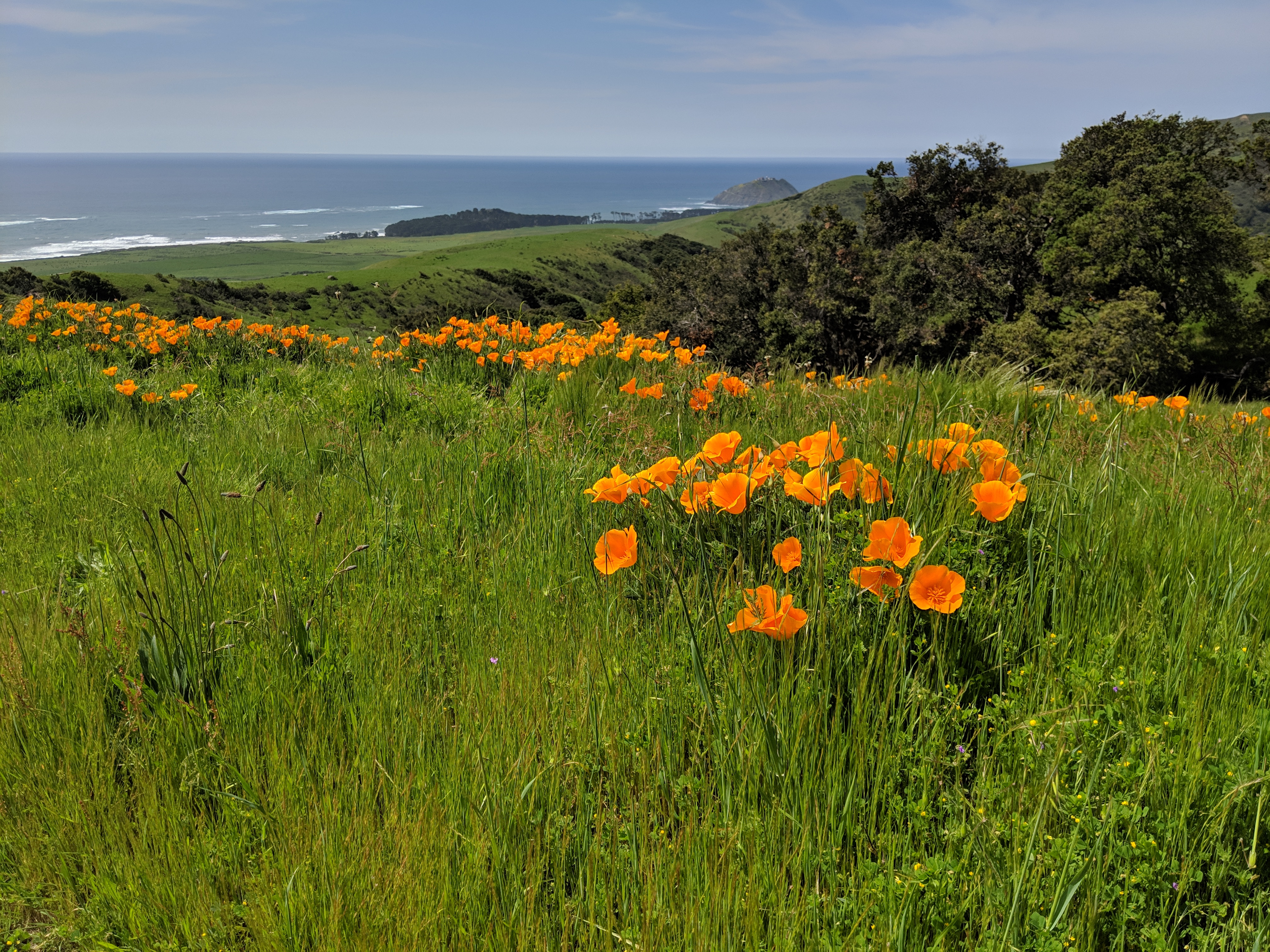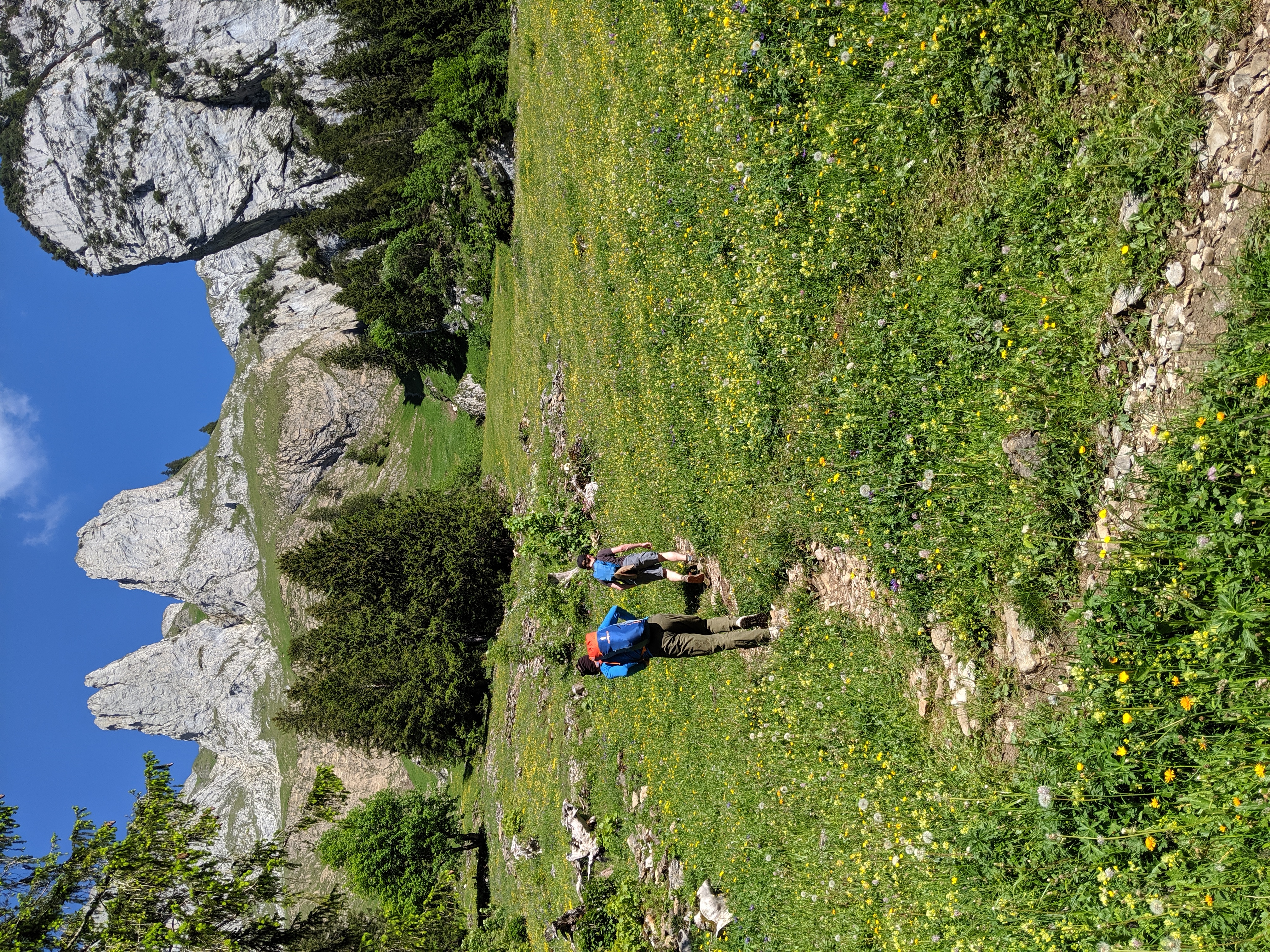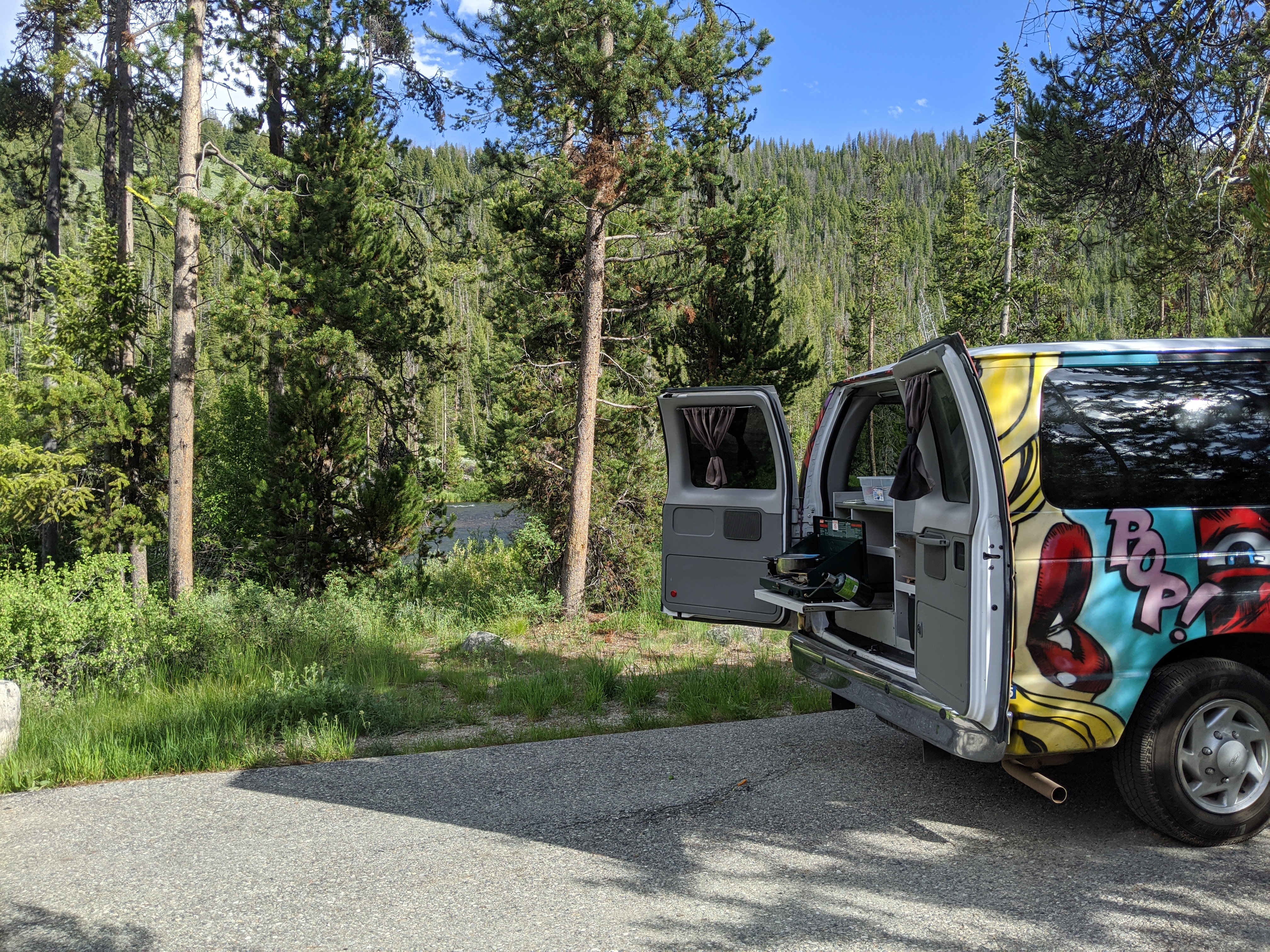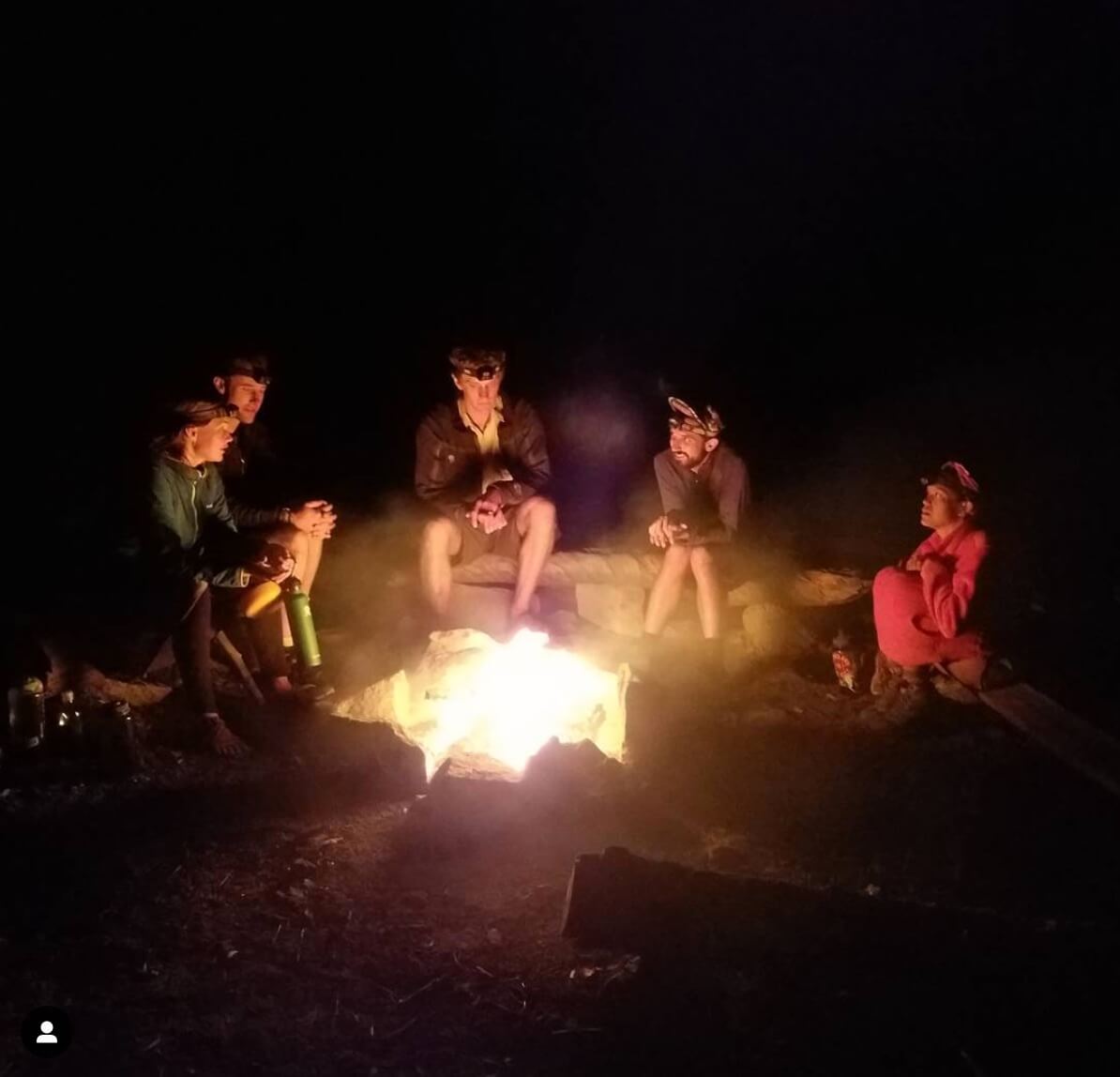Leave No Trace: Principles For Ethical Camping
Non classifié(e), How-To's & Resources, Trip Ideas & Guides
By Kim Merryman
Outdoor excursions have become a popular way to vacation in 2021 as we try to stay distanced from others and have limited access to many standard vacation amenities. I love seeing more people take advantage of the outdoors’ offerings—it’s a calming and relatively safe escape from our lockdowns and quarantines if we do it right.
However, I’ve also seen recent photos of trashed campgrounds and usually desolate mountain tops crowded with tents. So I thought I’d review the 7 Leave No Trace principles set forth by the Leave No Trace Center for Outdoor Ethics. I want to make sure I’m making as little environmental impact as possible on my upcoming Escape campervan trips, and you can too. Here are some takeaways from the 7 principles and a few ideas for reducing your environmental impact while on an Escape Campervan trip.

Leave No Trace Principle #1: Plan Ahead and Prepare
- Weather: Make sure you have the right clothing for your trip and adequate bedding. If you’re going somewhere cold, consider whether you’ll need to add on Escape’s electric kit or winter bedding upgrade.
- Directions: Purchase a map of the area or download it to your phone if you’re going somewhere that might not have Internet or cell service. Pack a charger for your phone.
- Meals: Plan your meals and grocery shop ahead of time.
- Roads: If you aren’t camping in established campgrounds, make sure the roads are paved and accessible for a van without AWD. Many parks and monuments have yearly road closures in the winter months. Check out what is open before you go.
- Regulations: If you’re bringing a pet, make sure they are welcome in the campgrounds and areas you plan to visit. If you’re hoping for a campfire, check for fire bans or restrictions in the area. Do you need permits for any trails you plan to use? Do you need to pack out your waste?
- Abilities: Read up on trails to ensure everyone in your group is capable of completing them and to ensure you bring enough water and food.

Leave No Trace Principle #2: Travel and Camp on Durable Surfaces
- Camping: Park the van on spots that are already clear of vegetation. Set up camp at least 200 feet from water so wildlife can access it from their usual routes and to avoid polluting the water.
- Hiking: Stay on the trails. Shortcutting or wandering from the trail can harm or destroy soil, vegetation, and wildlife.
- Cooking: Try to cook over rock, sand, or gravel, not over vegetation.
Leave No Trace Principle #3: Dispose of Waste Properly
- Trash: “Pack it in, pack it out.” If you bring it with you, take it with you. If it didn’t come from that land, don’t leave it there. This includes “natural” trash like orange peels, avocado seeds, and apple cores. Pack a variety of trash bags for your trip. Pick up your trash and any trash others left behind before you leave a site.
- Human waste: If your campsite doesn’t have toilets, the best way to dispose of solid human waste is to bury it. Find a spot far from your camp and far from trails, preferably in a place that gets plenty of sunshine, and dig a 6-8 inch hole. Make sure to fully bury the waste and cover it with leaves or pine needles. I bring a small trowel on all my trips for this special part of camping. Do not bury toilet paper, diapers, or feminine hygiene products—you’ll want to pack those out in a sealable plastic bag to put in the trash. In some locations, you will have to pack out your human waste. Check local regulations before you set up camp.
- Wastewater: Dump campervan wastewater only at designated dump stations. Many established campgrounds have these. Try to find other uses for things like pasta water (carb-load for tomorrow’s hike with pasta water hot chocolate!). If you pour out cooking water outside of the sink, strain it with a fine-mesh strainer then disperse it around the area.

Leave No Trace Principle #4: Leave What You Find
- If you altered your campsite in any way, return it to the way you found it before leaving.
- Try to find campsites rather than create new ones. Established fire rings are the easiest way to spot them. You can check apps like iOverlander and Hipcamp for established camp spots.
- Don’t carve into trees or put nails in them.
- Leave wildflowers where they are.
- Do not take souvenirs or touch artifacts or petroglyphs. Sometimes we are lucky enough to see artifacts like arrowheads or pottery shards. Take a picture and leave them so other people get to see them, too. Also, it’s illegal to disturb or take these items, so follow the law.
Leave No Trace Principle #5: Minimize Campfire Impacts
- Try camping without a campfire. You can cook on your stove and create a cozy atmosphere with a lantern or a couple strands of solar-powered twinkle lights. Bonus: Your clothes and hair won’t smell like smoke for the whole week!
- Always check for current fire restrictions/bans where you camp.
- Only build fires in existing fire rings (and only if there isn’t a current ban).
- Before leaving a fire, put it all the way out. Burn it all to white ash, and/or dump water on it until it’s completely out. Water works better than dirt for extinguishing a fire.
- Don’t cut down trees or strip branches from trees for firewood. Use downed wood or purchase firewood locally rather than bringing wood from elsewhere to burn.

Leave No Trace Principle #6: Respect Wildlife
- Observe wild animals from a distance—far enough away that they won’t run away or be scared.
- Keep the noise down when you’re out in the wild. But if you’re in bear country, do make a little noise so your presence does not surprise them.
- Don’t feed wild animals! Ever. Not even squirrels.
- Secure your food when you leave camp and at night. If your campsite has a bear box, put all your food in it. Lock it in the van if you aren’t in bear country.
- Again, keep camp 200 or more feet from water sources so animals can easily access them.
- If you find sick or injured animals, do not touch them. Call the local game warden to report it if you’re able.
Leave No Trace Principle #7: Be Considerate Of Other Visitors
- Camping: Think about how your experience is impacting others. We go to the outdoors for quiet, relaxation, and distance from crowds, so keep in check your noise level, your pets, and your impact on the land, so everyone can enjoy the outdoor experience.
- Hiking: Hikers going uphill have the right of way on most trails. Hikers usually yield to equestrians, and bicyclists yield to everyone else.
- Planning: Consider taking trips in the off-season or on weekdays so you and others can enjoy the outdoors with less crowding and less impact on wildlife. Traveling in smaller groups will also result in less impact on others and on the land.
Book An Escape Campervan And Plan Your Next Outdoor Adventure
Ethical camping requires a good amount of planning. Understanding the 7 Leave No Trace principles can help you enjoy a worry-free trip while reducing your impact on the environment. Go ahead, book your campervan, and set off on an adventure while enjoying the world responsibly.
